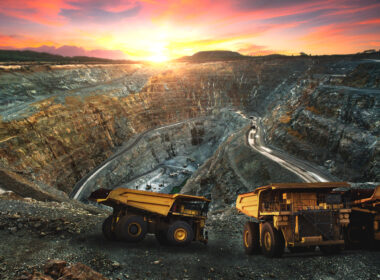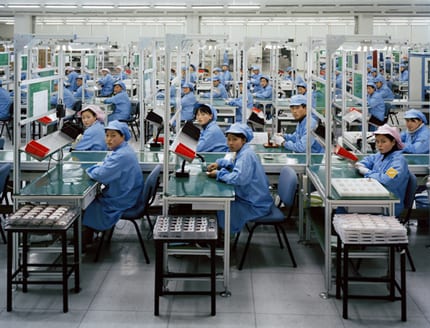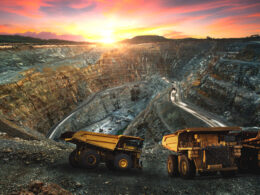Dear Readers,
We’re in the midst of a major global restructuring that has been happening for the last decade.
Technology is replacing the traditional methods of manpower – much like that of the auto industry where machines have taken over the assembly and production of automobiles.
Last week the U.S. Postal Service announced that it would be unable to meet billions of dollars in payments that are coming due in August and September for future retiree health benefits. Post offices all over the US are being cut back as digital communications have taken over.
Newspapers and magazines around the world are struggling as people move away from print to online media. Publishers everywhere are feeling the heat as new and less wasteful forms of books are published in digital format.
The days of walking to your neighbourhood video rental store are gone. The once famous Blockbuster stores and Canada’s own Rogers Video stores are all but obsolete. I still remember grabbing the free popcorn and browsing the aisles of the Jumbo Video stores – but that is a distant memory never to be relived again.
Innovation is human evolution. Yet as we advance in technology, more jobs will be destroyed and replaced by more efficient robotics and digital technology. Movies where humans lose their jobs to robots and technology are no longer fiction – its reality.
Manufacturing has long moved to emerging markets where costs of production are far below anything in N. America. That means the technology created here are sent overseas to be mass produced.
The Big Problem
Economies grow through mass consumption. The more we consume, the bigger the economy. That is why the US is the number one economy in the world; it is the ultimate consumer.
To fuel that consumption, an economy must be able to sustain itself through the production of goods and services. It must be able to create wealth through job creation. But the problem is there is no job creation.
Unemployment rate has been stuck above 8 percent for more than three years in a row (real unemployment rate is easily double that number) with little signs of hope. Confidence among U.S. consumers dropped in July to the lowest level this year.
Revised GDP numbers are now showing a 2.5 percent growth in the 12 months after the contraction ended in June 2009, compared with the 3.3 percent gain previously reported. The government also revised down corporate profits and personal income for each of the past three years.
The US knows it needs to create more jobs to fuel consumption – to increase GDP. But where will the new jobs come from?
The Truth About the Bubble
A couple of years ago in the letter, “The Truth About the Bubble” I wrote:
Over the past few decades, we have witnessed two very significant bubbles: the dot-com bust and the recent housing/commodities bubble.
During the rally of the dot-com days, everyone got excited about the Internet boom. The NASDAQ 100 doubled in less than a year and kids from their basements were becoming multi-millionaires.
In 1996 Alan Greenspan warned that the U.S. economy was suffering from “irrational exuberance” as the stock market, led by the high-tech and Internet sectors, boomed. Yet he and the Fed took no action, and added billions of dollars into the economy. Greenspan knew he should have put a hamper on the stock market craze with rate hikes, but he didn’t – until it was too late.
The dot-com crash wiped out $5 trillion in market value of technology companies in two years.
A few years after the dot-com boom, recovery was slow and tedious. This put pressure on the fed to once again cut the Fed Funds rate dramatically over the next few years from a high of 6.25% in 2001 down as low as 1.5% in 2004. This, of course, created yet another bubble.
The Housing and Commodities Bubble
Because of the low rate, housing prices were climbing and many of the homes increased by as much as 200% in less than a few years.
First time home buyers were eagerly racing to snag up homes with low interest rate mortgages. They took on half million dollar mortgages on houses that were worth less than 200k just years ago.
Combine that with offers from mortgage companies that were far too good to be true, it led to the subprime mortgage crash, and thus 2008 unfolded.
A Credit Bubble
Where I am I going with this?
For the last decade, most American consumption came as a result of low borrowing costs. This led to the major bubble in 2008. Yet here we are again and the only choice politicians have is to give away free money to avoid the same disaster caused by giving away free money.
In Q2 America added $2.33 in debt for every $1 in GDP; the US added $274.3 billion in debt while adding $117.6 billion in GDP. Never have I studied a scenario like this that hasn’t ended in disaster.
There is no way to avoid the collapse of a credit boom. There are only two simplified choices:
- Let the world’s financial system collapse
- Print more money/expand credit, destroy currency
Most people believe that printing more money causes inflation. But what they don’t realise is that it doesn’t always happen right away. Too much austerity can, and will, lead to a deflationary spiral – especially when combined with a world economy that is in surplus. Years of deflation will occur, followed by a fast and major rise in inflation as the economy recovers and grows.
The world is producing far more than it can consume as a result of a mentality that the only way out of this credit bubble is to increase spending. But when the spending comes from debt, it only creates a larger bubble. What would happen if the US couldn’t print more money? What would happen if the dollar was no longer the world’s reserve currency?
Still Number One…But for How Long?
The only reason America has not already collapsed under the weight of its massive debt is because of its status as the world’s reserve currency. That status means it can print massive amounts of dollars and people will still buy them. But surely this won’t last.
I have mentioned before in my letter, “The Biggest Buyer of Garbage” that China is secretly and cautiously introducing its currency to the world by untangling itself from its substantial reserves of US dollar. I also talked about how China and Russia have already abandoned the dollar in bilateral trade dealings, resolving to use their own currencies instead (see It’s Already Here).
Many major banks, including British banking giant HSBC, have already openly said the Renminbi could soon become another world reserve currency. These banks are already setting up in preperation for this occurence by allowing major transactions to be done in the Renminbi. HSBC has just recently created the first Renminbi bond issue outside of China and Hong Kong, a move toward the internationalisation of the renminbi, and in the UK’s efforts to expand its financial links with the world’s largest emerging market.
If it were freely convertible today, the Renminbi will be the second-largest currency in the world.
What Happens if China Sells Out?
China is the largest holder of US bonds. If China were to sell its $1 trillion plus of US bond holdings, the prices of US bonds would drop and interest rates would rise (yield moves opposite to price in bond markets. The rate of interest from a bond does not change, so the price of that bond fluctuates to adjust to current yields. The bigger the yield, the bigger the risk associated with the issuing country.)
Higher interest rates would obviously be bad for business. As the world’s largest manufacturer, China cannot afford bad business. As a result, China would not be looking to unleash all of their US bonds. Rather they would slowly diversify their holdings for gold and other commodities.
It’s not a coincidence that the US is both the largest holder of gold bullion and the world’s reserve currency; it has more than 76% of its foreign holdings in gold. China, on the other hand, owns less than 2% of its foreign holdings in gold. Furthermore, the US has nearly 8 times more gold than China.
China will be increasing its gold reserves.
I mentioned a few weeks back that banks in Europe will soon have to recapitalise their tier 1 assets in gold bullion. What many are unaware of as well is that the recent proposal from the Germans on the European redemption facility requires that gold be posted as collateral by those who participate.
That’s a clear sign that countries and central banks trust gold over any other currencies.
Gold to Breakout?
From a technical standpoint, gold is looking to rebound with some serious momentum. If gold were to break through $1640 and stay above this level, we should see a renewed rise in gold.
Gold mining shares are looking strong – finally.
Despite the drought, the GDX’s MACD has finally turned up towards a buy signal and RSI is also positive. Bellwether Agnico Eagle’s price action is looking much stronger – especially considering the beating it took after its $2-billion write-down earlier this year at its shuttered Goldex mine.
By September, Hong Kong will have completed construction and opening the doors to its largest gold vault. It will hold nearly 22% of the gold that Fort Knox has.
China, currently the world’s second largest consumer of gold, is clearly making a statement that it wants to expand its holdings of physical gold bullion.
You don’t build a vault that big just for show.
Until next week,
Ivan Lo
Equedia Weekly

Disclosure: I am long gold and silver through ETF’s and bullion, as well as long both major and junior gold and silver companies. It’s your money to invest and we don’t share in your profits or your losses, so please take responsibility for doing your own due diligence. Remember, past performance is not indicative of future performance. Just because many of the companies in our previous Equedia Reports have done well, doesn’t mean they all will.
Equedia.com & Equedia Network Corporation bears no liability for losses and/or damages arising from the use of this newsletter or any third party content provided herein. Equedia.com is an online financial newsletter owned by Equedia Network Corporation. We are focused on researching small-cap and large-cap public companies. Our past performance does not guarantee future results. Information in this report has been obtained from sources considered to be reliable, but we do not guarantee that it is accurate or complete. This material is not an offer to sell or a solicitation of an offer to buy any securities or commodities.
Furthermore, to keep our reports and newsletters FREE, from time to time we may publish paid advertisements from third parties and sponsored companies. We are also compensated to perform research on specific companies and often act as consultants to many of the companies mentioned in this letter and on our website at equedia.com. We also make direct investments into many of these companies and own shares and/or options in them. Companies do pay us to advertise on our website and we often distribute our reports on featured companies. While we are never paid to write a rosy and positive report on any company, we do market our reports using the advertising fees paid for by our featured companies.
This process allows us to continue publishing high-quality investment ideas at no cost to you whatsoever. Our revenue is generated by sponsor companies and we grow our readership by using the advertising fees we charge to distribute our reports. This helps both Equedia and our client companies gain exposure and allows us to provide you with our research at no cost.
Therefore, information should not be construed as unbiased. Each contract varies in duration, services performed and compensation received.
If you ever have any questions or concerns about our business or publications, we encourage you to contact us at the email or phone number below. Equedia.com is not responsible for any claims made by any of the mentioned companies or third party content providers. You should independently investigate and fully understand all risks before investing. We are not a registered broker-dealer or financial advisor. Before investing in any securities, you should consult with your financial advisor and a registered broker-dealer. The information and data in this report were obtained from sources considered reliable. Their accuracy or completeness is not guaranteed and the giving of the same is not to be deemed as an offer or solicitation on our part with respect to the sale or purchase of any securities or commodities. Any decision to purchase or sell as a result of the opinions expressed in this report OR ON Equedia.com will be the full responsibility of the person authorizing such transaction.
Please view our privacy policy and disclaimer to view our full disclosure at http://equedia.com/cms.php/terms. Our views and opinions regarding the companies within Equedia.com are our own views and are based on information that we have received, which we assumed to be reliable. We do not guarantee that any of the companies will perform as we expect, and any comparisons we have made to other companies may not be valid or come into effect. Equedia.com is paid editorial fees for its writing and the dissemination of material and the companies featured do not have to meet any specific financial criteria. The companies represented by Equedia.com are typically development-stage companies that pose a much higher risk to investors. When investing in speculative stocks of this nature, it is possible to lose your entire investment over time. Statements included in this newsletter may contain forward looking statements, including the Company’s intentions, forecasts, plans or other matters that haven’t yet occurred. Such statements involve a number of risks and uncertainties. Further information on potential factors that may affect, delay or prevent such forward looking statements from coming to fruition can be found in their specific Financial reports.
Equedia Network Corporation is also a distributor (and not a publisher) of content supplied by third parties and Subscribers. Accordingly, Equedia Network Corporation has no more editorial control over such content than does a public library, bookstore, or newsstand. Any opinions, advice, statements, services, offers, or other information or content expressed or made available by third parties, including information providers, Subscribers or any other user of the Equedia Network Corporation Network of Sites, are those of the respective author(s) or distributor(s) and not of Equedia Network Corporation. Neither Equedia Network Corporation nor any third-party provider of information guarantees the accuracy, completeness, or usefulness of any content, nor its merchantability or fitness for any particular purpose.













Comments 1